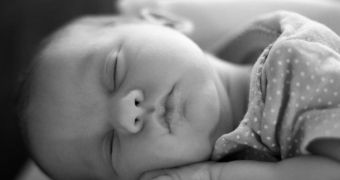Some diseases are difficult enough to detect when they affect adults, but they can be a real pain to identify in children. In pediatric wards in hospitals around the world, kids are admitted daily with conditions or symptoms that do not readily match the description of any disease. The incidence that some disorders have in the general children population is also difficult to establish, because predictive factors don't work on the little ones as they do in adults. In a recent study, it was proven that sleep-related breathing disorders (SRBD) are very hard to detect in children groups, ScienceDaily reports.
Details of the investigation were presented at the 19th Annual Meeting of the American Academy of Dental Sleep Medicine, on Saturday, June 5. Researchers from the University of North Carolina (UNC) conducted a series of researches into SRBD, and determined that as much as 18 percent of all pediatric patients in their studies were inclined to develop this condition sooner or later. The worrying part of their discovery is the fact that no demographic or craniofacial characteristics can be used as indicators as to which of the little ones will develop the condition. For adults, a number of methods for establishing risks exist, but they do not readily work on children.
“We were surprised that our findings suggested that the risk for pediatric sleep disordered breathing was as high as it was, since our review of the literature suggested that the prevalence of pediatric obstructive sleep apnea was one to three percent. We speculate that either our sample size was too small, or that additional factors contribute to the condition in children,” explains Kristen Fritz, who was the principle investigator. The work was conducted on about 100 kids, aged between 7 and 17, of which more than half were females. Some 73 percent of participants were Caucasian, 10 percent were Hispanic, and nine percent African American.
"Screening tools such as the PSQ [Pediatric Sleep Questionnaire], or specific inquiry about suspected risk factors such as snoring, sleepiness or behavioral problems, offer dentists who treat children an opportunity to recognize, educate and refer pediatric patients that may be at risk for SRBD,” Fritz argues. In the investigation, she explains, the research team looked at which children were at risk of developing SRBD, and then looked at each participant's craniofacial features. No clear correlation was found between the two, whereas, in adults, a clear connection was immediately visible.

 14 DAY TRIAL //
14 DAY TRIAL //